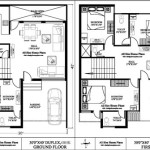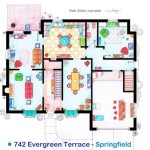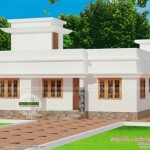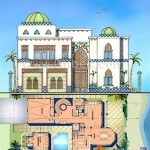It must be well written, SEO Friendly and detailed. ## 15 Lakhs Budget House Plans In Kerala 2024: Navigating the Dream Building a home is a significant life event, particularly in a place like Kerala, where architectural aesthetics blend seamlessly with practical living. However, the rising costs of construction have made realizing this dream challenging for many. This article explores the possibility of constructing a house in Kerala with a budget of 15 lakhs in 2024. It delves into strategies, design considerations, material choices, and other essential aspects that can help make this affordable housing goal a reality. The article also indirectly touches upon aspects considered auspicious in Kerala, drawing a parallel with the enduring architectural principles found in texts like *Horosc Mahabhar* (referencing traditional knowledge systems).
Realizing a house within a strict budget requires meticulous planning and prioritizing essential needs over extravagant desires. It necessitates a shift in mindset from opulent designs to functional, space-efficient layouts. The key lies in optimizing the use of available space and employing cost-effective construction techniques.
The year 2024 presents a unique set of challenges and opportunities in the construction sector. Rising material costs, labor shortages, and fluctuating market trends all contribute to the complexity of building a home. Therefore, a comprehensive understanding of these factors is crucial for anyone embarking on a construction project with a limited budget.
Key Point 1: Design Optimization and Space Efficiency
The foundation of a budget-friendly house lies in its design. A simple, rectangular or square-shaped design is generally more cost-effective than complex, multi-angular layouts. This is because simple designs minimize the amount of material wasted during construction and reduce the complexity involved in the building process.
Focusing on functional spaces is paramount. Prioritize essential rooms such as bedrooms, a living area, a kitchen, and bathrooms. Avoid unnecessary embellishments or extra rooms that add to the construction cost without significantly enhancing the living experience. Every square foot should be utilized effectively.
Open floor plans can create a sense of spaciousness even in smaller homes. Combining the living and dining areas can significantly reduce the need for separate walls and doors, thereby lowering costs. Strategic placement of windows and doors can also maximize natural light and ventilation, reducing the reliance on artificial lighting and air conditioning, which translates to long-term energy savings.
When it comes to Kerala architecture, even traditional homes, while ornate, often prioritize efficient use of space and natural elements. The concept of *Vaastu Shastra*, akin to the philosophical underpinnings of *Horosc Mahabhar*, emphasizes aligning the house with natural energies, which can also promote efficient design and resource utilization. Though not directly related to cost-cutting, understanding these principles helps create a home that feels inherently comfortable and well-planned, potentially reducing the need for expensive modifications later on.
Consider a single-story house plan to avoid the added expense of a staircase and reinforced foundations required for multi-story buildings. However, if land is limited, a compact two-story design can be explored, ensuring that the design remains simple and efficient.
Key Point 2: Material Selection and Cost-Effective Construction Techniques
The choice of building materials significantly impacts the overall cost of construction. Opting for locally sourced materials can reduce transportation costs and support local businesses. Laterite stone, commonly found in Kerala, is a durable and cost-effective building material, particularly for the foundation and walls. However, its suitability should be assessed based on the specific soil conditions of the construction site.
Concrete blocks are another viable option for wall construction. They are generally cheaper than bricks and offer good thermal insulation. The use of pre-fabricated materials can also speed up the construction process and reduce labor costs.
For roofing, consider using reinforced cement concrete (RCC) slabs or galvanized iron (GI) sheets. RCC slabs offer better durability and insulation, but GI sheets are a more budget-friendly option. Clay tiles can be used for roofing if a more traditional aesthetic is desired, but their cost and installation can be higher compared to other options.
Flooring can be done using cost-effective options like ceramic tiles or even polished cement. Avoid expensive marble or granite flooring, which can significantly increase the overall cost. Simple, functional finishes are key to staying within budget.
Explore cost-effective construction techniques such as rat-trap bond masonry or filler slab construction. These techniques can reduce the amount of material used and improve thermal insulation, leading to long-term energy savings. Consulting with an experienced contractor who is familiar with these techniques is crucial.
The essence of traditional Kerala architecture lies in using locally available, sustainable materials. While modern construction demands more processed materials, the underlying principle of resourcefulness remains relevant when trying to build on a budget. Just as *Horosc Mahabhar* emphasizes ethical and practical living, choosing sustainable and cost-effective materials reflects a responsible approach to building a home.
Key Point 3: Labor Management and Project Supervision
Labor costs constitute a significant portion of the overall construction budget. Effective labor management is crucial for staying within budget. Hire skilled and experienced laborers, but avoid unnecessary manpower. Negotiate labor rates beforehand and ensure that the payment terms are clearly defined.
Regular project supervision is essential to ensure that the construction is progressing according to plan and that materials are being used efficiently. This can help prevent costly mistakes and delays. Appoint a reliable supervisor who can oversee the construction process and ensure that the quality of work is maintained.
Consider employing a contractor who is willing to work on a fixed-price contract. This can provide a clear estimate of the overall cost and reduce the risk of unexpected expenses. However, ensure that the contract clearly defines the scope of work, the materials to be used, and the payment terms.
When dealing with contractors, it is crucial to establish clear communication channels and address any concerns promptly. Regular site meetings can help to track progress and resolve any issues that may arise.
Even the most skilled craftsmen can benefit from clear instructions and effective supervision. The concept of Dharma, as emphasized in texts like *Horosc Mahabhar*, stresses the importance of duty and responsibility. Ensuring that laborers understand their roles and are properly supervised can lead to a more efficient and cost-effective construction process.
Negotiating rates and comparing quotes from different contractors is vital. Don't hesitate to seek multiple bids for each aspect of the construction, from foundation laying to electrical wiring. This ensures you are getting the best possible value for your money.
Detailed Breakdown of Potential Costs (Estimated):
It is important to underscore that the following figures are estimations and can vary significantly based on location, material choices, labor costs, and design complexity. These serve as guidelines and should be adjusted based on consultation with local contractors and material suppliers.
1. Land Preparation and Foundation: Rs. 1,50,000 - Rs. 2,50,000
This includes clearing the site, leveling the ground, digging the foundation trenches, and laying the foundation with concrete and reinforcement.
2. Structure (Walls, Columns, Beams): Rs. 4,00,000 - Rs. 5,00,000
This covers the cost of materials and labor for constructing the walls (using laterite stone or concrete blocks), columns, and beams. The variation depends on the size and configuration of the house.
3. Roofing: Rs. 2,00,000 - Rs. 3,00,000
This includes the cost of roofing materials (RCC slabs or GI sheets) and the labor involved in constructing the roof structure.
4. Flooring: Rs. 1,00,000 - Rs. 1,50,000
This covers the cost of flooring materials (ceramic tiles or polished cement) and the labor for laying the flooring.
5. Doors and Windows: Rs. 1,00,000 - Rs. 1,50,000
This includes the cost of doors and windows (wooden or UPVC) and the labor for installation. Opting for simpler designs and locally sourced materials can help reduce this cost.
6. Plumbing and Sanitation: Rs. 1,00,000 - Rs. 1,50,000
This covers the cost of plumbing pipes, fittings, sanitary ware (toilet, sink, shower), and the labor for installation.
7. Electrical Wiring and Fixtures: Rs. 1,00,000 - Rs. 1,50,000
This includes the cost of electrical wiring, switches, sockets, lighting fixtures, and the labor for installation.
8. Plastering and Painting: Rs. 1,00,000 - Rs. 1,50,000
This covers the cost of plastering materials and paint, as well as the labor involved in plastering and painting the walls.
9. Miscellaneous Expenses (Labor, Transportation, Contingency): Rs. 1,50,000 - Rs. 2,50,000
This includes unforeseen expenses, labor costs that might exceed initial estimates, transportation of materials, and other miscellaneous costs. It is prudent to allocate a contingency fund to cover unexpected expenses.
Total Estimated Cost: Rs. 13,00,000 - Rs. 18,00,000
This estimate indicates that building a house in Kerala with a budget of 15 lakhs in 2024 is possible, but requires careful planning, efficient design, cost-effective material selection, and diligent project supervision. A higher budget provides more flexibility and allows for higher quality materials and finishes.
These figures are a starting point. Obtain detailed quotes from local contractors and suppliers to get a more accurate estimate tailored to your specific requirements and location within Kerala.
Embracing Simplicity and Sustainability
Building a home on a limited budget requires a shift in perspective. Instead of focusing on lavish designs and expensive materials, embrace simplicity and functionality. Prioritize essential needs over extravagant desires. Choose cost-effective materials and construction techniques. And, most importantly, plan meticulously and supervise the construction process diligently. The goal is to create a comfortable and functional living space that meets your needs without breaking the bank.
The principles enshrined in ancient texts, while not directly related to construction costs, emphasize the importance of harmony, balance, and resourcefulness. By embracing these principles, it is possible to create a home that is not only affordable but also aesthetically pleasing and environmentally sustainable.
In conclusion, constructing a house in Kerala with a 15 lakhs budget in 2024 is achievable with careful planning and execution. Optimizing design, selecting cost-effective materials, managing labor efficiently, and embracing simplicity are key to realizing this dream.

30 Lakh House Design Dream Home On A Budget In 2024

Simple 5 Lakh Budget House Plans 2025

30 Lakh House Design Dream Home On A Budget In 2024

Simple 5 Lakh Budget House Plans 2025

Simple 5 Lakh Budget House Plans 2025

30 Lakh House Design Dream Home On A Budget In 2024

30 Lakh House Design Dream Home On A Budget In 2024

30 Lakh House Design Dream Home On A Budget In 2024

Simple 5 Lakh Budget House Plans 2025

Simple 5 Lakh Budget House Plans 2025








